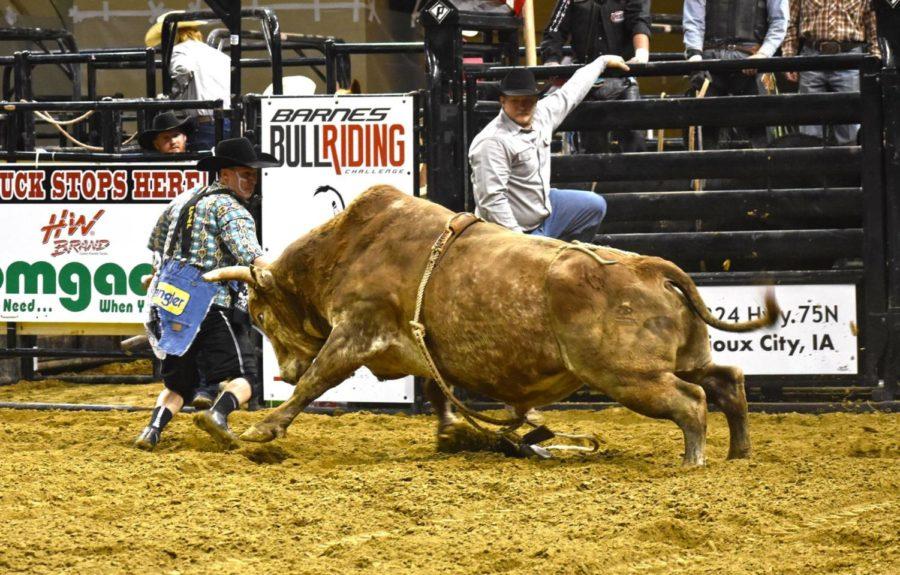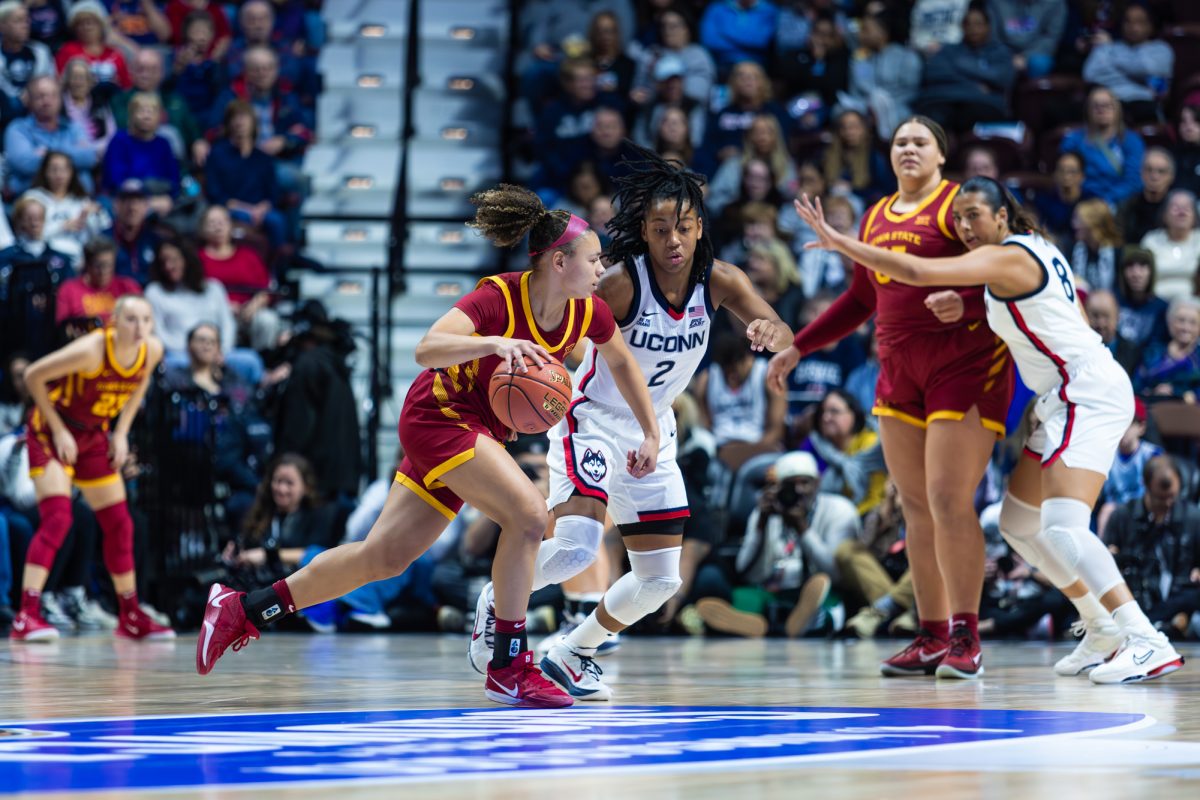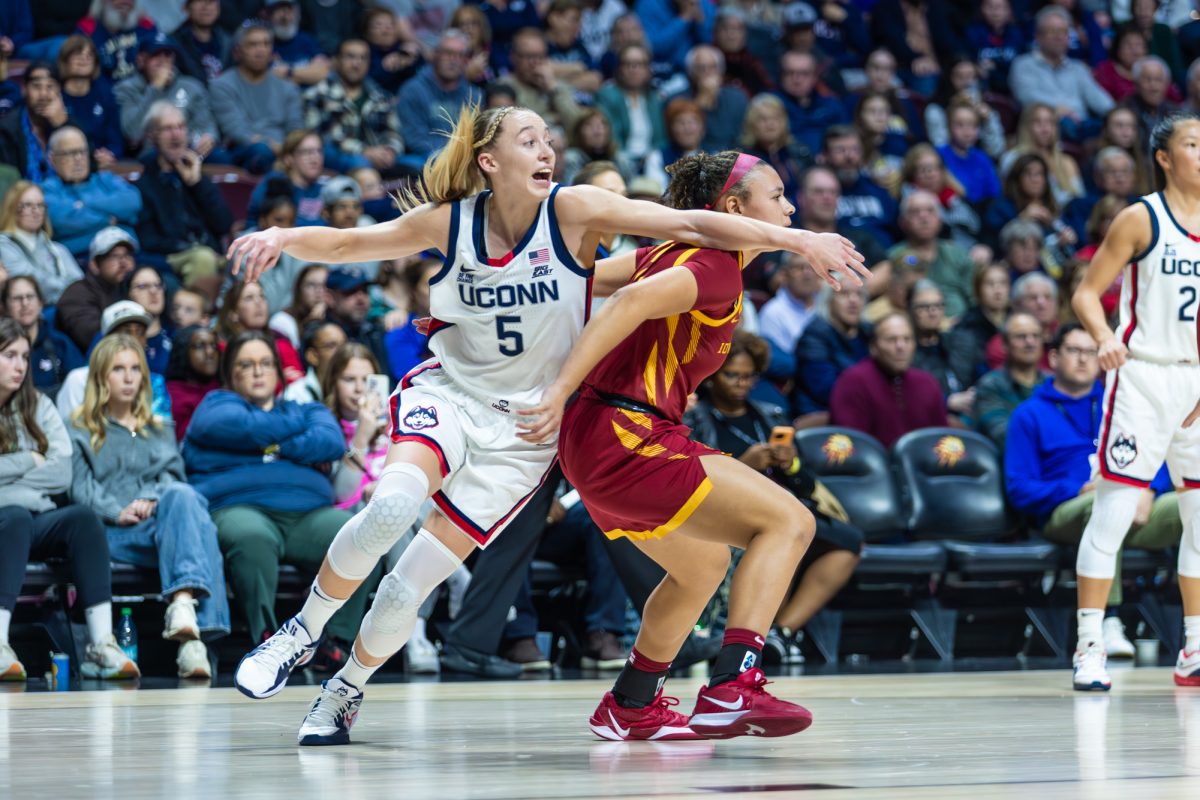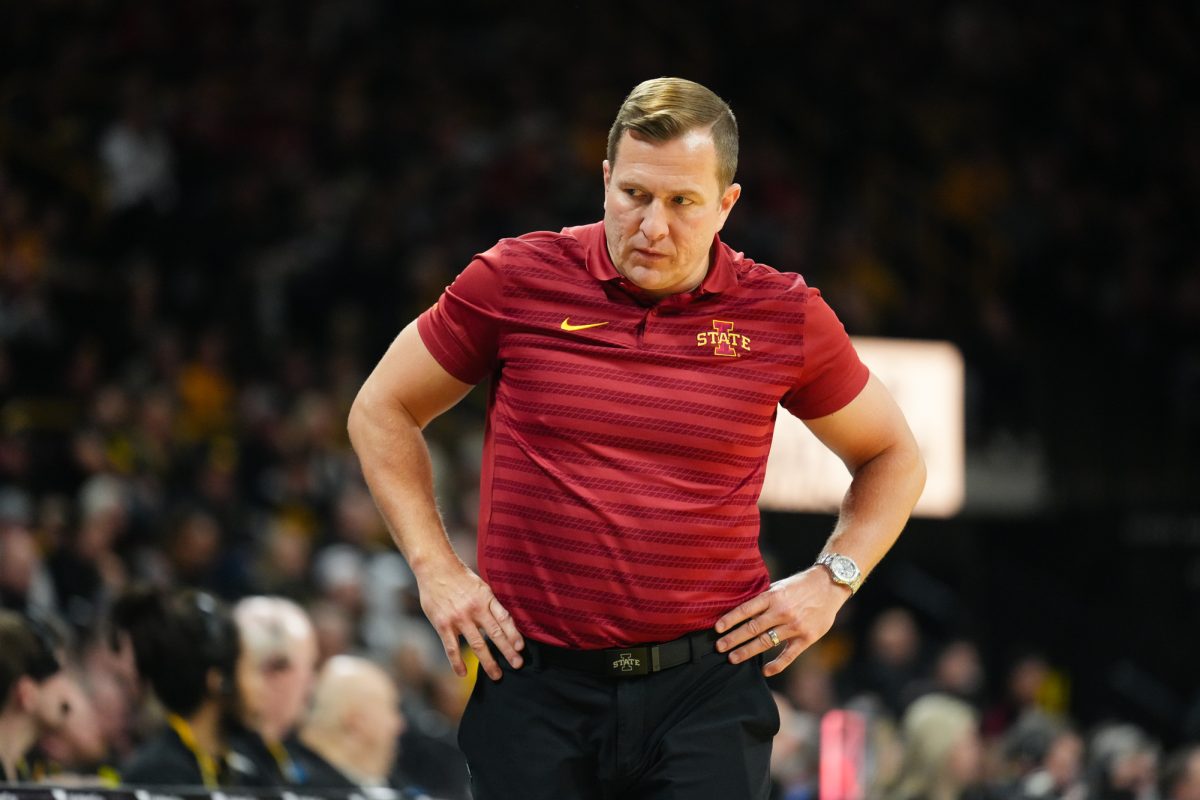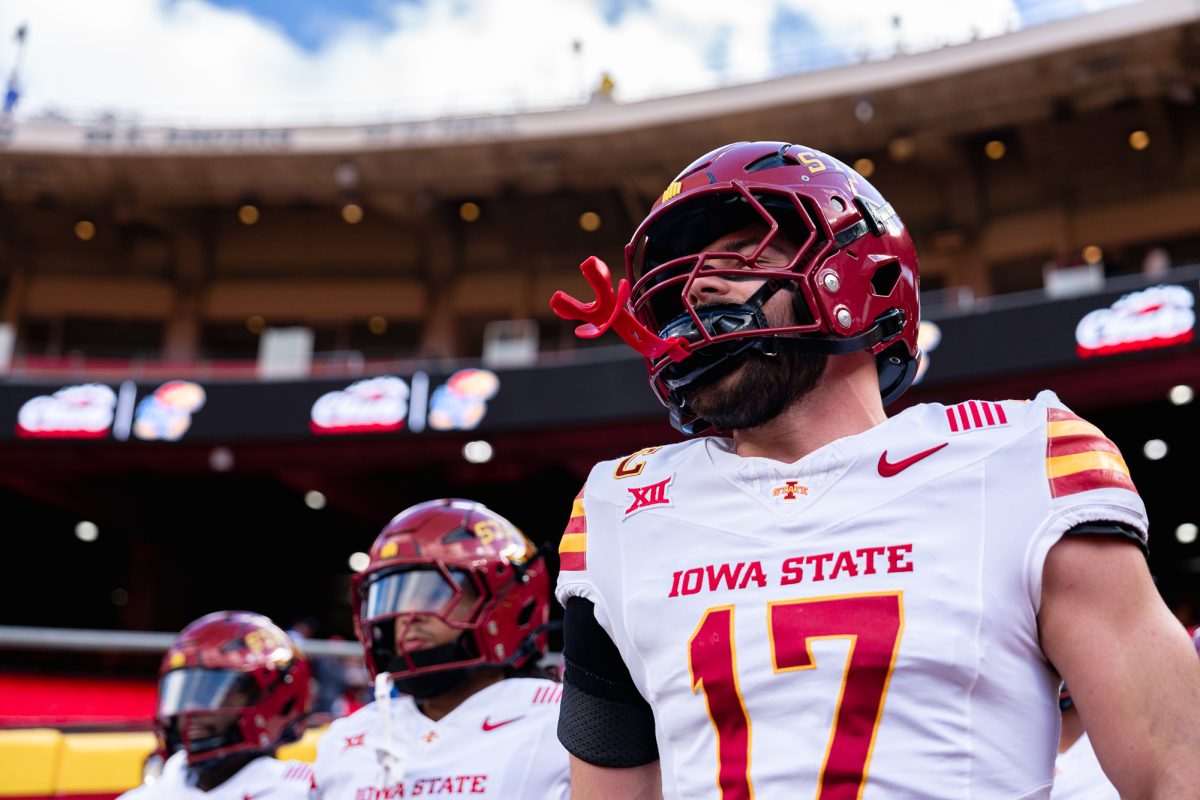Bullfighters: the unsung heroes of the rodeo
February 28, 2018
Malachi Schroeder, senior in agricultural studies, dropped down into the chute and bowed his legs around a red and yellow speckled beast. He then secured the long rope that was drawn across the animal’s chest and across its back.
Schroeder’s left hand wore a leather glove that he tugged across the end of the rope several times before it was eventually wrapped around his hand in an effort to secure a better grip.
Once Schroeder was set, he braced as the chute swung open. The bull below him jerked outside of the chute and began the ride.
Schroeder only needed to remain on the animal for eight seconds, but the bull moved to the right quickly and he lost his grip with his feet on the bull’s sides.
The cowboy’s legs came free from the sides of the bull and he flipped over the rope that held his hand. Bound by rope to the bull, Schroeder was being rag dolled by the roughly one ton beast.
Bullfighters jumped into the action to free Schroeder’s hand from the bull, but were battered by the animal.
By the time Schroeder’s hand was free with help from the bullfighters, he had been hung up for 15 seconds.
Without the bullfighters, Schroeder most likely would not have gotten free as soon as he did and could have suffered unimaginable injuries.
“I don’t know too many people who would get on bulls without bullfighters,” Schroeder said.
Every rodeo, bullfighters make one of the most dangerous sports in the world much safer.
The bullfighters’ purpose in the rodeo is to protect dismounted cowboys from being trampled or hooked by the bull while providing the crowd extra entertainment.
Bullfighters Luke Moore and Daren Chambers became involved with the rodeo early.
Moore has been a bullfighter for 11 years. He began rodeo activities as a child by being a barrel man for mutton bustin’, an event similar to bull riding in which children ride sheep. Chambers began bullfighting four years ago and prior to that rode bulls in high school and college.
Both of their journeys began at rodeo school, which is a two-day crash course on techniques involving bullfighting.
Participants begin working with calves that are around 600 pounds before finishing on full-sized bulls that weigh around one ton.
Moore and Chambers described the learning curve at school as steep, as both described being banged up and hooked by horns numerous times from calves and bulls.
Chambers said he believes he was hooked more that weekend than he has been his entire fourth season as a fighter.
The fighters also worked on shooting the gap once a rider was bucked off.
In bullfighting, the gap is the space between the rider and the bull. It is the fighter’s job to get in that space so the cowboy can move to safety.
Once the fighter is in the gap, he grabs the bull by the head and pulls it away from the cowboy. The bull becomes agitated at the bullfighter, who draws the animal away.
No matter how close the bull is to the rider, the fighter needs to enter that gap.
“There’s instances where that gap that you are shooting is a lot smaller than you want it to be and you just got to know the mentality that you’re going to get hooked just to keep that rider safe,” Chambers said.
Some of the most dangerous scenarios involve the rider falling directly under the bull’s head. That requires the bullfighters to pull that animal off as fast as possible because the rider is guaranteed to get hooked by the bull.
Schroeder was involved in a dangerous accident at a rodeo in River Falls, Wisconsin. During a ride, the bull came out of the chute and kicked when Schroeder thought the animal would rear.
Schroeder’s head was pushed back by momentum all the way to the animal’s tail and then shot forward.
When his head came forward, it slammed into the bull’s skull right between it’s horns, concussing him and causing him to see a “bright gold film” on everything he looked at.
Both Chambers and Moore said during times such as those, there is no other option than to take a hit from the bull to assure the rider is safe.
The bullfighters aren’t completely vulnerable to the bull’s horns, as they wear protective padding. The gear includes a vest that covers the fighters abdomen and back, which includes pads on the side protecting the ribs from being gored.
A fighter’s legs only have pads on the side of their leg from their hip to above their knee. That makes it imperative that a fighter turns to the side and “show pad” to the bull when being hooked to avoid serious injuries.
Chambers said usually the pad protects him enough from the bulls horns that being hooked usually doesn’t hurt, but there are instances when it can cause a sizable amount of pain.
What gets the fighters from rodeo to rodeo is the idea that they have to protect the cowboys no matter what because the cowboys will always ride no matter the injury they experience.
If the cowboys don’t ride, they don’t get paid.
That and the adrenaline rush gets both through each night and creates a mutual respect between the two parties.
“They know they wouldn’t have a job if it wasn’t for us [if] we are all beat up and not there and we wouldn’t be getting on if it wasn’t for them,” Schroeder said.
After the first season, Chambers said he felt the speed of bullfighting was beginning to slow down and he was able to begin working the bull, or making the animal do what he wanted it to do.
Moore said he saw that the more rodeos he worked, the more his timing and positioning improved, along with his ability to read bulls and understand what they would do.
Moore, though, lost quite a bit of those skills he acquired when he began his deployment as a captain in the Army, where he served for five years after completing ROTC at Iowa State.
When Moore was in the Army, he was only able to bullfight at one to two rodeos a year. But once his duty was up, Moore transitioned to full-time bullfighting quickly.
“I went from being a captain in the Army to being a professional bullfighter in about two weeks,” Moore said.
ROTC in college allowed Moore to stay in better shape and develop a “no excuses” attitude that benefited his bullfighting career.
For Chambers, the beatings are nothing compared to the satisfaction of keeping your friends safe to pair with the glory of fighting and adrenaline rush.
“The feeling of you getting hooked and that rider [stands] up to walk behind the chutes and he’ll be able to put his rope on another [bull] tomorrow,” Chamber said. “It makes all that pain go away.”
According to Chambers, when there is a mutual trust between the rider and bullfighters, everyone performs at a higher level.
In the end, Moore said what brings the bullfighters and riders back to competition week after week is the camaraderie formed between those involved.
For all those involved, from the fans to the riders, bull riding is addicting and creates a passionate group of fans and participants that have a deep love for the sport.
“As a professional bullfighter, I love the fans,” Moore said. “I love having kids come up and ask what I do and sign autographs for them.”


